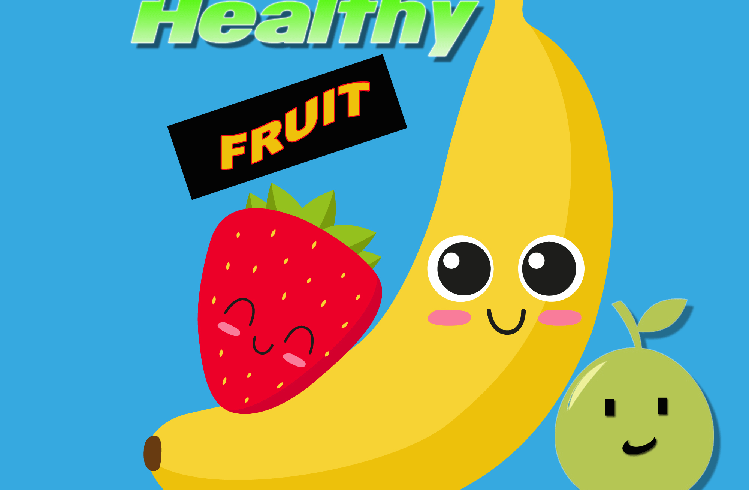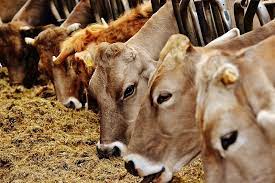INTRODUCTION
Agriculture was one of the prominent causes of a quick shift of civilization from a nomadic life to a steady present day life by switching to produce stable food in a single location round the year. In other words, men settled down by domestication and upscale production of stable food. Good nutrition is a function of both economics and education. Organoleptic consideration may not be the sole criteria of excellence when it comes to food and nutrition owing to widespread use of adulterant and non-permissible preservative and additives in food. Essentially the most popular examples of devils in our food are the devil salt (because of the presence of silicate salts for absorbing moisture from the salt) and devil milk (A1 beta casein protein). These devils are associated with most of the popular life style diseases of the human population in our society. The haploid poultry eggs are also sometimes a popular example. These are unfertilized eggs and mostly contain high amount of estrogen. The influx of excess estrogen in female may lead to early puberty and other gynecological disorders and in men may result in male gynecomastia or male breast development. Use of oxytocin for quick growth, use of coloring agents like malachite green, unwise use of pesticidse like endosulfan, use of color pigments like erythrosine B in water melon, etc. are popular examples. The other front is the synthetic regime starting from synthetic rice, synthetic milk, synthetic eggs and synthetic vegetables like cabbage. The list is very long. So awareness about food adulteration shall play a vital role to keep consumers healthy and informed. Such awareness may also include taking correct food in proper season. Sometimes the choice of getting uneven food out of season unnecessarily brings in the chance of getting adulterated food with unusual preservative and methods.
Despite the present crisis of selecting a healthy food, at times properly grown, easily available and economic local fruit may be a much better choice for nutritional supplement rather than the risk of taking exotic and popular fruits which have a chance of being raised in an unhealthy way. Local fruits like banana, guava and straw berry are the good examples.
BANANA
Banana is the fourth most important food crop in terms of gross value after paddy, wheat and milk products and it is an important crop for subsistence of farmers. In India, it is the second most important fruit crop after mango. It is known as Kluai (Thailand), Muz (Turkish) and Moz (Persian). In India, it is known as kela (Hindi), kera (Nepali), kele (Marathi), kella (Punjabi), kadali (Oriya), kela (Gujrati), lafoi (Manipuri), khiel (Kashmiri), kola (Bengali) and kol (Assamese).
In India, its year round availability, affordability, varietal range, taste, nutritive and medicinal value makes it the favorite fruit among all classes of people. It also has a good export potential. Apart from being a staple food, it is known for its rich and easily digestible carbohydrates with a calorific value of 67-137/100 g fruit. Being a rich source of vitamin C and minerals, it makes a healthy and salt-free diet. In India, banana contributes to 31.72% of the total fruit production. India is the largest producer of banana in the world. Andhra Pradesh, Assam, Bihar, Gujarat, Karnataka, Kerala, Madhya Pradesh, Maharashtra, Orissa and West Bengal are the major banana-growing states, the highest productivity being 65.7 tonnes/ ha in Maharashtra followed by Gujarat (34.8 tonnes/ ha). Mean temperature of 20-30C is optimum for its growth. Its growth declines with fluctuations in mean temperature. In sandy loamy soil, the plants grow faster compared to vertisol or clay loamy soil. Though soil pH of 6.5-7.5 is optimum, banana can be grown in soils having a pH up to 8.5 with suitable amendments.
Banana is a rich source of carbohydrate and is rich in vitamins particularly vitamin B. Banana is a good source of energy, high fibre (helps in weight management), helps in depression and mood swing, good for bone and eye health and prevents kidney cancer. It is also a good source of potassium, phosphorus, calcium and magnesium. The fruit is easy to digest, and free from fat and cholesterol. Banana powder is used as the first baby food. It helps in reducing risk of heart diseases when used regularly and is recommended for patients suffering from high blood pressure, arthritis, ulcer, gastroenteritis and kidney disorders. Processed products, such as chips, banana puree, jam, jelly, juice, wine and halwa can be made from the fruit. The tender stem, which bears the inflorescence is extracted by removing the leaf sheaths of the harvested pseudostem and used as a vegetable. Plantains or cooking bananas are rich in starch and have a chemical composition similar to that of potato. In unripe bananas, the carbohydrates are mostly starches. In the process of ripening, the starches are converted to sugars; a fully ripe banana has only 1-2% starch.
The high content of iron in bananas increases the production of hemoglobin in the blood -therefore they are very good for anemia. Banana milkshake with honey can give immense relief from hangover. Cold milk soothes the stomach lining and bananas with honey build up depleted blood sugar levels. Bananas are exceedingly good for students as they are the rich source of potassium which can keep students alert. The fruit is often called a brain tonic. Potassium is a vital mineral which normalizes >heartbeat while regulating the body’s water balance. As banana is a rich source of potassium, it re-balances disturbances of fluids in the body. A single banana provides you with 23% of the potassium that is needed on a daily basis. Potassium benefits the muscles as it helps maintain their proper working and prevents muscle spasms. Potassium also reduces the risk of stroke. The potassium and magnesium content of banana help the body to recover from nicotine withdrawal. Bananas work well for people who have high blood pressure as they have natural low salt levels. For those suffering from depression, bananas are good as they contain a protein called serotonin which is also called the ‘happy hormone’ as it makes one feel happy and relaxed. Bananas can be eaten frequently to treat ulcers as they neutralize acidity in the stomach. Bananas have an antacid effect, so people who experience heart burn find relief on eating a banana. Not only can bananas relieve painful ulcer systems and other intestinal disorders, they can also promote healing. The fruit is used to heal the intestine lesions. Because banana is rich in non-digestible fibers (including cellulose, hemicellulose and alphaglucans), it can help restore normal bowel activity and can help with both constipation and diarrhoea. Bananas normalizes the colon’s function to absorb large amounts of water for regular bowel movements. Their usefulness is due to their richness in pectin, which is water-absorbent and this gives them a bulk producing ability. Bananas are an exceptionally rich source of fructo-oligosaccharide, a compound called a prebiotic because it nourishes probiotic (friendly) bacteria in the colon. These beneficial bacteria produce vitamins and digestive enzymes that improve our ability to absorb nutrients, plus compounds that protect us against unfriendly microorganisms. When fructo-oligosaccharides are fermented by these friendly bacteria, not only do numbers of probiotic bacteria increase, but so does the body’s ability to absorb calcium. For this reason, ingesting antibiotics harm these beneficial bacteria.
Eating bananas helps people give up smoking as this fruit is rich in vitamin C, A, D, B6 and B12. The banana stem has fiber – this is very beneficial for those on a weight-loss program. It is also a rich source of potassium and vitamin B6 which helps in the production of insulin and hemoglobin. Eating banana stem, once a week, keeps high blood pressure under control. Banana stem also maintains fluid balance within the body. It is a diuretic and helps to detoxify the body. The extract of core of the stem is considered to be useful in dissolving the stones in kidney and urinary bladder and reducing weight. The inflorescence mixed with coconut oil and spices is used for flushing the urinary blocks.
The flower has been used in traditional medicine to treat bronchitis, dysentery and on ulcers; cooked flowers are given to diabetic patient for constipation and ulcer problems. It also eases menstrual cramps. The extracts of banana flower have antioxidant properties that prevent free radicals and control cell and tissue damage. Bananas aid in the body’s retention of calcium, nitrogen, and phosphorus, all of which work to build healthy and regenerated tissues. The astringent plant sap is used in cases of hysteria, epilepsy, leprosy, fevers, hemorrhages, acute dysentery and diarrhoea, and it is applied on hemorrhoids, insect and other stings and bites. The roots are administered in digestive disorders, dysentery and other ailments.
STRAW BERRY
Strawberry is a magical fruit. Epidemiological studies have associated strawberry consumption with lower rates of hypertension, inflammation, cancer and death from cardiovascular diseases, lowering blood LDL cholesterol levels, total cholesterol, reducing the oxidation of LDL cholesterol, and decreasing the spike in blood sugar after high sugar meals and the spike in blood cholesterol seen after high-fat meals. However, limited research indicates that strawberry consumption may be associated with a decreased cardiovascular disease risk and that phytochemicals present in strawberries have anti-inflammatory or anticancer properties in laboratory studies. Garden strawberries contain the dimeric ellagitannin agrimoniin, flavonoids, (anthocyanins, flavanols, flavonols and phenolic acids such as hydroxybenzoic acid and hydroxycinnamic acid. The entire strawberry plant was used to treat depressive illnesses. Another method uses a compost sock. Plants grown in compost socks have been shown to produce significantly higher oxygen radical absorbance capacity (ORAC), flavonoids, anthocyanins, fructose, glucose, sucrose, malic acid and citric acid than fruits produced in the black plastic mulch or matted row systems.
GUAVA
This humble fruit is extraordinarily rich in vitamin C, lycopene and antioxidants that are beneficial for skin. Guavas are also rich in manganese which helps the body to absorb other key nutrients from the food that we eat. Guavas contain folate which helps promote fertility. The potassium in guavas helps normalize blood pressure levels as well. Guava boosts immunity as huge amount of vitamin C is present in it (four times as that of orange), lowers risk of cancer, heart disease, improves eye sight (due to presence of vitamin A) and beats toothache. Presence of magnesium in guava helps to relax muscle and nerves, which rejuvenates brain (vitamin B3 and B6), etc.
CONCLUSION
Banana, guava, strawberry and such other local fruits are both affordable and have nutraceutical property which are easily available in the tropical and sub-tropical countries. Almost all the parts of the plant are utilized for one or the other purpose. As a fruit of choice, these fruits find their place secured as a mega source of indispensable essential nutrients for human body in all seasons. The habit of inculcating these fruits in our diet regularly shall keep us not only healthy but also rejuvenate our system to fight against diseases.
Dr. Sandeep Das
Associate Professor,
Dept. of Biotechnology,
Bodoland University, Kokrajhar




